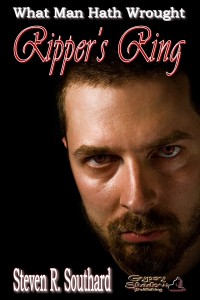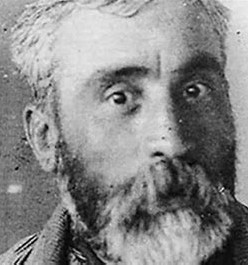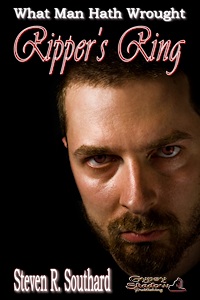Wouldn’t it be amazing if you could make yourself invisible at will? Do you wish you could just disappear and reappear when you wanted to? If you had the Ring of Gyges, you could.
The philosopher Plato discusses the Ring of Gyges in The Republic. He uses the ring as an allegory, similar to his use of Atlantis and his famous allegory of the cave.
In Plato’s ring allegory, Gyges is a shepherd in the country of Lydia. An earthquake uncovers the opening of a cave, which Gyges discovers while tending his flock of sheep. He goes into the cave and finds a bronze horse statue with its torso opened up. Within it is a man’s corpse with a golden ring on one of its fingers. Gyges takes the ring. He finds that if he turns the ring’s collet (the part that secures the stone in place) so its stone points toward the base of his finger, he disappears. If he turns the collet 180 degrees so the stone points to his fingertip, he reappears. He goes to the palace of Lydia, seduces the Queen, kills the King, and becomes King himself.
Why am I telling you about the Ring of Gyges? It’s because I make use of that ring in my upcoming story,  “Ripper’s Ring,” which will be launched in early May. In my story, a troubled character in East London comes across the ring in the summer of 1888, and starts killing prostitutes. He becomes the murderer we know as Jack the Ripper. Now you understand why they never caught the Ripper. When you read “Ripper’s Ring” you’ll also learn how the Ring of Gyges works, and why Gyges found it on a corpse inside a horse statue in a cave.
“Ripper’s Ring,” which will be launched in early May. In my story, a troubled character in East London comes across the ring in the summer of 1888, and starts killing prostitutes. He becomes the murderer we know as Jack the Ripper. Now you understand why they never caught the Ripper. When you read “Ripper’s Ring” you’ll also learn how the Ring of Gyges works, and why Gyges found it on a corpse inside a horse statue in a cave.
Some of you are thinking, “A magic ring? Hasn’t that been overdone? Does the literary world really need another magic ring?” You’re recalling Aladdin’s ring in Arabian Nights, the Ring of Solomon, J.R.R. Tolkien’s One Ring, Wagner’s Ring Cycle, the rings in C.S. Lewis’ The Chronicles of Narnia, and Marvolo Gaunt’s Ring in the Harry Potter books by J. K. Rowling.
Enough with the magic rings already, you’re saying. Well, my ring is different. Not only does it turn its bearer invisible, but it also provides the bearer some mental visions of all the ring’s previous owners. When my troubled character comes across the Ring of Gyges, he learns its history and what it can do.
Now back to Plato. What was that ancient Greek philosopher doing discussing a ring of invisibility? He stated that the ring separated actions from consequences; that is, an invisible man could commit an immoral act (as Gyges did by killing the King) without fear of retribution, since no one could connect him with the crime. Further, Plato believed that if a person had such a ring, his eventual commission of immoral acts was inevitable. In other words, no one can resist the temptation of invisibility and the power it conveys.
No one? Well, in The Republic, Socrates doubts the temptation is as inevitable as Plato thinks.
My scientifically minded readers are laughing at the whole idea of human invisibility. After all, the human eye only works because light interacts with the rod and cone cells in the retina at the back of the eyeball. If the eyeball is invisible, light passes through without interacting. In other words, an invisible person is also blind. You could get around that with partial invisibility, allowing only the retinas to remain opaque. It would be a bit creepy—two partial eyeballs seeming to float around, but at least you could see.
How did I resolve that problem in my story? I didn’t. Sorry. I chose the course most writers do and ignored the problem. At least I’m admitting that here.
If you come into possession of the Ring of Gyges, just keep it. Better yet, destroy it. Whatever you do, don’t bring it to—
Poseidon’s Scribe



